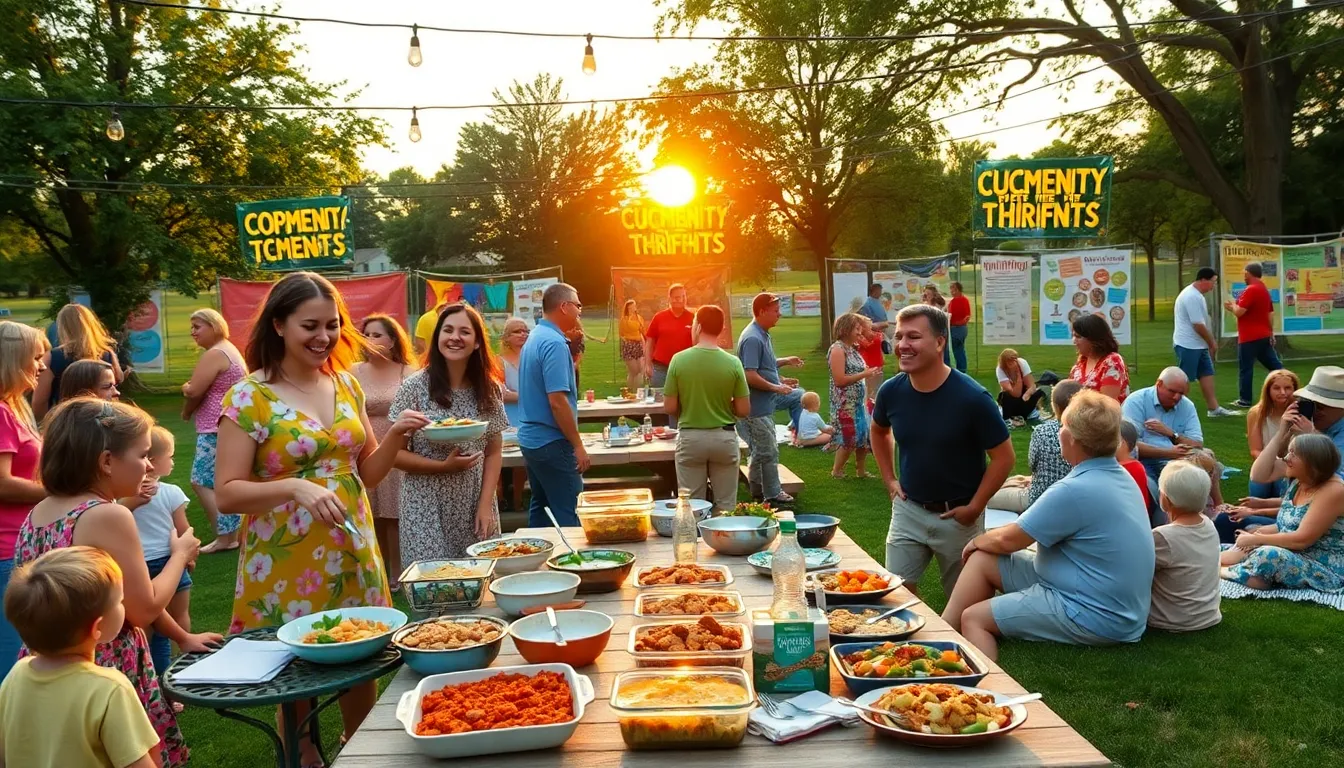In today’s world, where economic constraints are a reality for many, thrifty events have emerged as a popular choice for both personal and community activities. With careful planning and creativity, individuals and organizations can host memorable gatherings without very costly. This article explores the concept of thrifty events, their benefits, planning strategies, marketing approaches, and success stories that showcase how effective they can be.
Table of Contents
ToggleUnderstanding Thrifty Events

Thrifty events are gatherings designed with a focus on minimal expenditure while maximizing enjoyment and engagement. These events can range from community fairs and potlucks to corporate meetings and family celebrations, all planned with budget-friendly approaches in mind.
The essence of thrifty events lies in creativity and resourcefulness. By utilizing existing resources, local talent, and cost-effective solutions, hosts can create engaging experiences that resonate with attendees, fostering connection and community spirit without the hefty price tag.
Benefits of Hosting Thrifty Events
Hosting thrifty events can bring a multitude of benefits:
- Cost-Effective: The primary advantage is the financial savings. By cutting unnecessary costs, hosts can allocate funds to enhance the overall experience, perhaps by including unique activities or better refreshments.
- Community Building: Thrifty events often engage local participants and businesses, fostering a sense of community and encouraging collaboration among different groups.
- Creativity and Innovation: Planning thrifty events prompts hosts to think outside the box, leading to more innovative ideas that can surprise and delight attendees.
- Sustainability: Many thrifty events emphasize reusing supplies and materials or sourcing items locally, which helps in promoting environmentally sustainable practices.
How to Plan Thrifty Events
Planning a thrifty event requires careful consideration and a strategic approach. Here are essential steps to ensure success:
Creative Ideas for Thrifty Events
- Theme-Based Potlucks: Invite guests to bring dishes based on a specific theme, making it easier to coordinate and ensure variety.
- Outdoor Movie Night: Use a projector and screen to create a cozy movie-watching experience in a local park. Encourage attendees to bring blankets and snacks.
- Workshops or Skill Sharing Sessions: Leverage the skills of your community by hosting workshops where members can teach each other something new, from crafting to cooking.
Budgeting Tips for Thrifty Events
- Set a Clear Budget: Start by defining how much you can spend and stick to it. List every potential expense to avoid surprises.
- Prioritize Essentials: Identify what aspects of the event are non-negotiable and allocate your budget accordingly.
- Seek Sponsorships: Local businesses might be willing to sponsor your event by providing products or services in exchange for advertising.
- Use Volunteers: Enlist family or friends to help out, reducing labor costs significantly. Volunteers can also help with planning, setup, and execution.
Marketing Your Thrifty Event
Effective marketing is crucial for ensuring a good turnout at your thrifty event. Here are some strategies to consider:
- Leverage Social Media: Use platforms like Facebook, Instagram, and Twitter to create event pages and share updates. Engaging visuals and compelling descriptions can attract a larger audience.
- Word of Mouth: Encourage attendees to spread the word among their networks. Personal recommendations can significantly enhance attendance.
- Use Community Boards: Many communities have local bulletin boards, both physical and online, where events can be posted for wider visibility.
- Email Campaigns: If you have access to an email list of potential attendees, send out invitations detailing the event and its unique features, emphasizing its budget-friendly nature.
Success Stories of Thrifty Events
Numerous successful thrifty events demonstrate the potential of creative planning and community involvement.
For instance, a small town in mid-America organized a community fair that relied entirely on donated goods and services from local businesses. Attendees enjoyed a day full of activities like games, music performances, and food without spending much. This event attracted large crowds, promoted local businesses, and brought the community closer together.
In another example, a nonprofit organization hosted a fundraising gala with a twist, inviting local chefs to compete in a cook-off using local produce. The event not only raised funds but also spotlighted local agricultural efforts while being budget-conscious. These success stories illustrate how thrifty events can effectively blend enjoyment and purpose.
Conclusion
Thrifty events are not just a trend but a practical approach to gathering that benefits everyone involved. With careful planning, creative ideas, and strong community ties, hosts can create enjoyable experiences without overspending. The benefits extend beyond mere savings: they foster community, encourage creativity, and support sustainability. Whether it’s a small gathering or a large community event, embracing a thrifty mindset can lead to memorable experiences that resonate long after the event is over.



